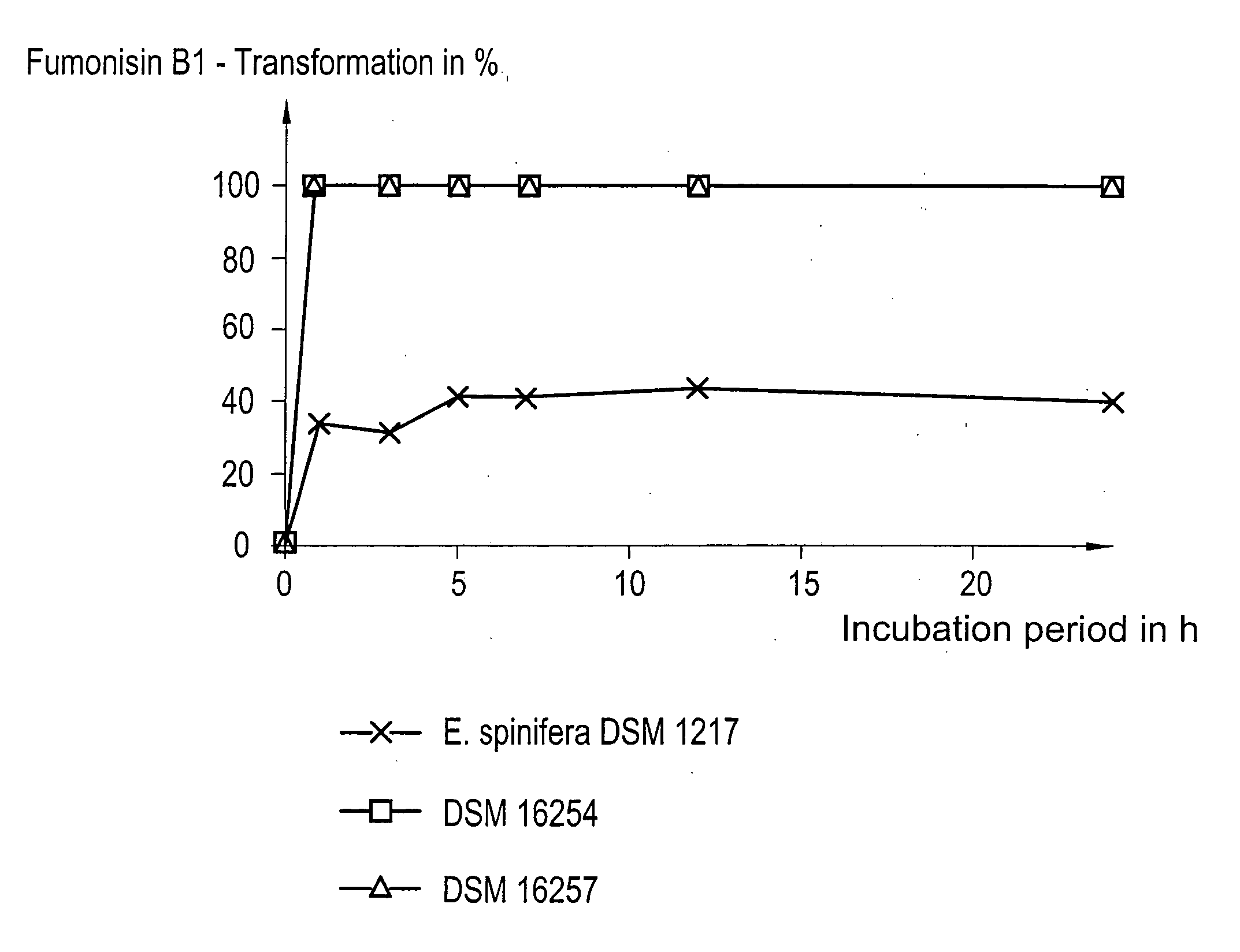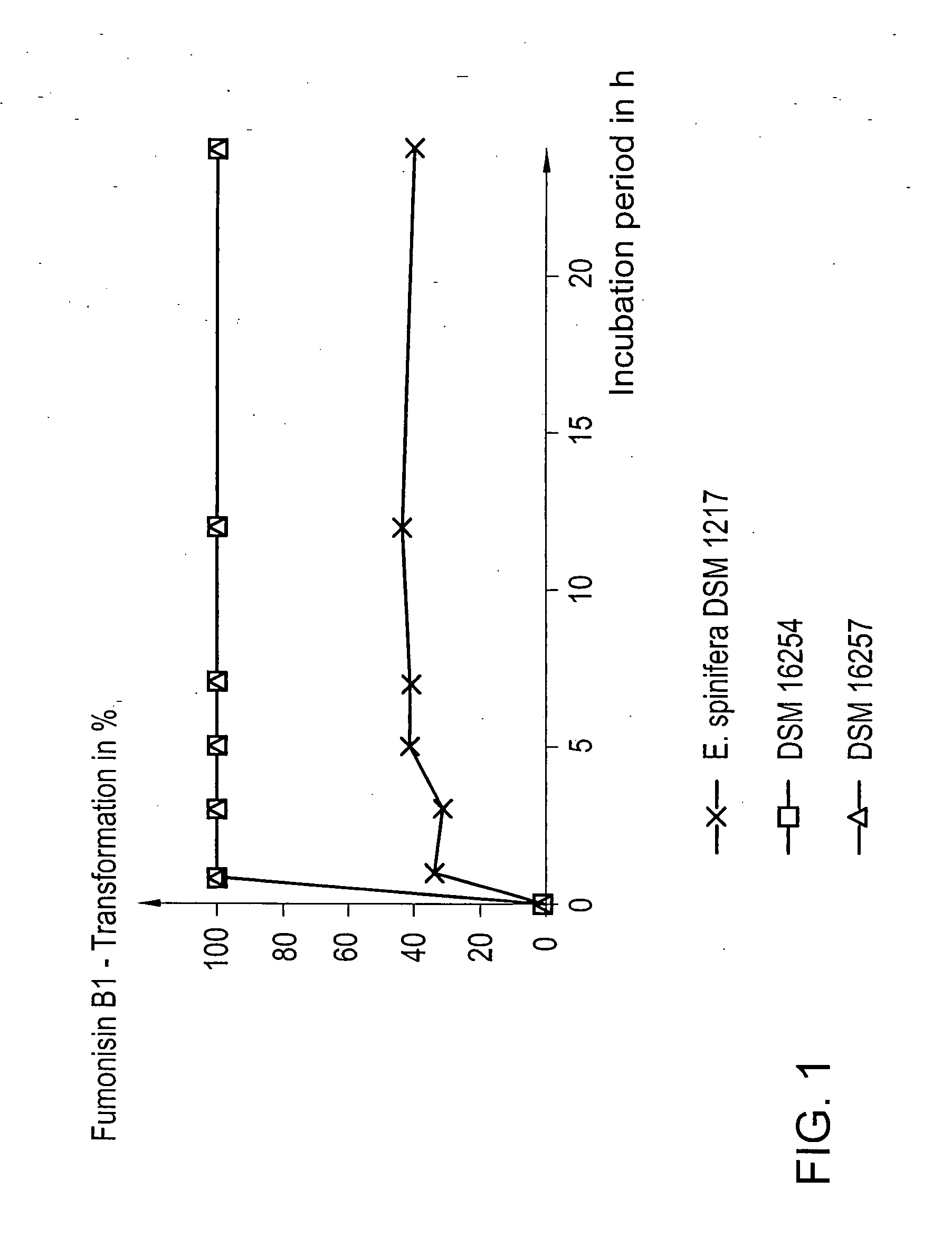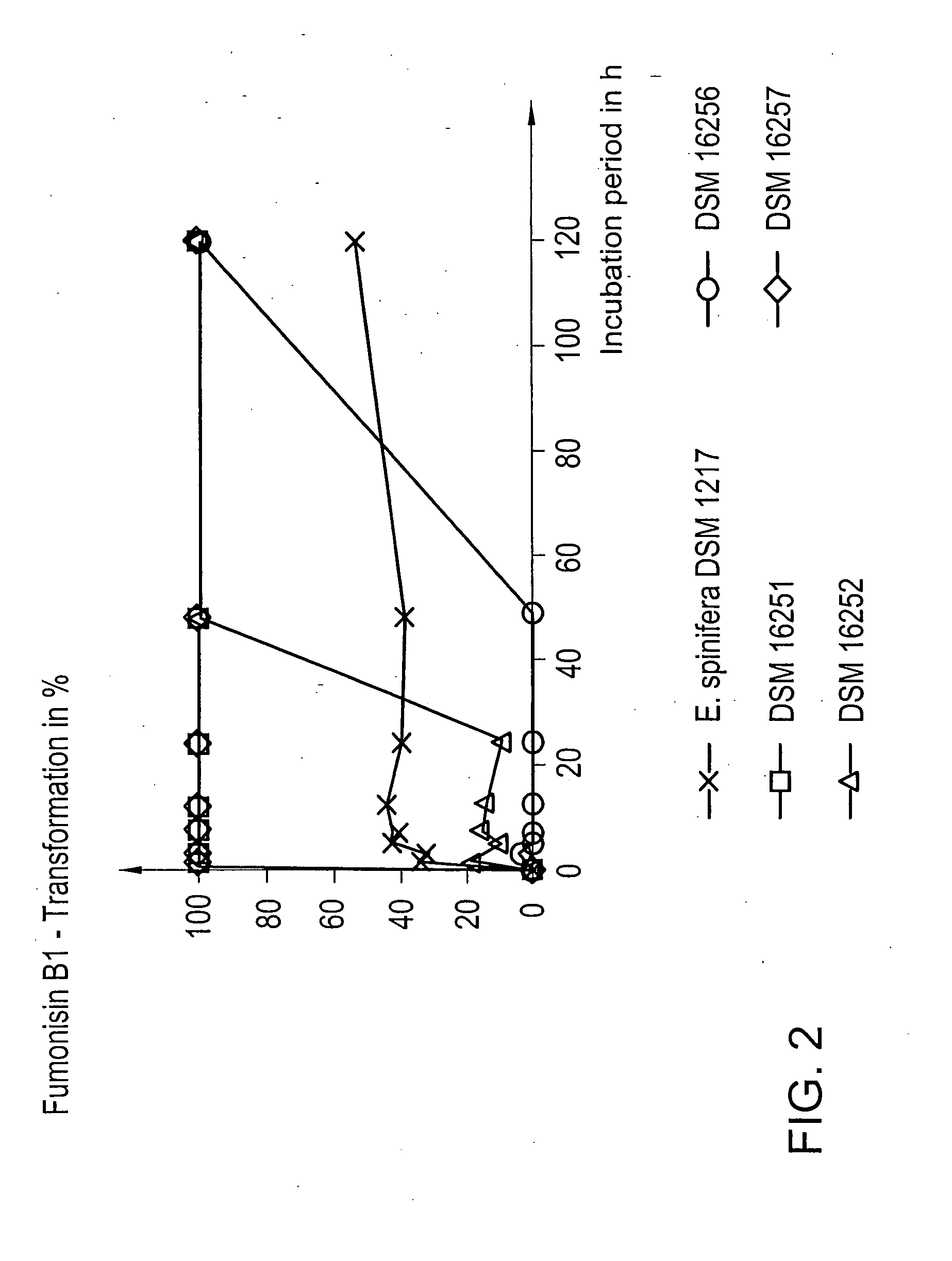Micro-organism for decontaminating fumonisins and its use, method for decontaminating fumonisins, and feed additive containing said micro-oragnism
- Summary
- Abstract
- Description
- Claims
- Application Information
AI Technical Summary
Benefits of technology
Problems solved by technology
Method used
Image
Examples
example 1
Degradation or Detoxification of Fumonisin B in Minimal Medium at a Toxin Concentration of 2 mg / L Fumonisin B1
[0038] The tests were carried out using the microorganisms DSM 16254 and DSM 16257 as well as, for reasons of comparison, the strain Exophiala spinifera DSM 1217.
[0039] In all cases, the incubation took place at 25° C. under aerobic conditions. The cultivation of the microorganisms was carried out in the presence of 50 mg / l fumonisin B1 in common cultivation medium in order to enable an eventually possible induction of the fumonisin-B1-detoxifying enzymes. From FIG. 1 it is apparent that the strains DSM 16254 and DSM 16257 have transformed fumonisin B1 by 100% already after 1 h of incubation, while the comparative yeast strain E. spinifera was able to transform no more than 41% of the toxin after an incubation period of 24 h. The microorganisms according to the present invention, thus, not only are able to extremely rapidly detoxify fumonisin B1 in minimal medium, but such...
example 2
Degradation of Fumonisin B1 at Different Toxin Concentrations
[0041] The tests were carried out with DSM 16254, DSM 16257 and DSM 16256 as well as with the yeast strain Exophiala spinifera DSM 1217 by comparison. The applied toxin concentrations were 2, 10, 50, 100 and 500 mg / l fumonisin B1. Incubation was effected under aerobic conditions at 25° C. The results are indicated after 5 h of incubation of the assays, since such incubation times constitute practise-relevant periods in respect to the detoxification of fumonisins in feeds. FIG. 3 shows the results of this test. The microorganism DSM 16254 was able to degrade fumonisin B1 100% in all concentration ranges, the microorganism DSM 16257 was merely able to reach a 96% degradation in a concentration range of 100 mg / l fumonisin B1, DSM 16256 enabled a 100% degradation at a concentration of 2 mg / l, a degradation of more than 50% at a concentration of 10 mg / l, a degradation of 35% and 25% at concentrations of 50 mg / l and 100 mg / l, r...
example 3
Degradation of Fumonisin B1 in Complex Medium
[0042] This test investigated the ability of the microorganisms to detoxify fumonisin B1 also in complex media in the presence of high nutrient concentrations. The cultivation of the microorganisms took place in a complex nutritive medium comprising 5 g / l peptone from meat extract and 3 g / 1 meat extract, which was supplemented with two different concentrations of fumonisin B1, namely 10 mg / l and 100 mg / l. The determination of the transformation rates was effected by a comparison of the toxin contents in the assays at the beginning and at the end of a 72-hour-incubation at 25° C. under aerobic conditions. In both cases a 100% detoxification or 100% degradation of fumonisin B1 was obtained in the presence of 10 mg / l fumonisin B1 in the medium. Even in the presence of 100 mg / l fumonisin B1, a 100% detoxification was reached in both cases. This test clearly proved that the microorganisms according to the invention are suitable for the degrad...
PUM
 Login to View More
Login to View More Abstract
Description
Claims
Application Information
 Login to View More
Login to View More - R&D
- Intellectual Property
- Life Sciences
- Materials
- Tech Scout
- Unparalleled Data Quality
- Higher Quality Content
- 60% Fewer Hallucinations
Browse by: Latest US Patents, China's latest patents, Technical Efficacy Thesaurus, Application Domain, Technology Topic, Popular Technical Reports.
© 2025 PatSnap. All rights reserved.Legal|Privacy policy|Modern Slavery Act Transparency Statement|Sitemap|About US| Contact US: help@patsnap.com



